NYSI levels up youth coaches with advances in skill acquisition

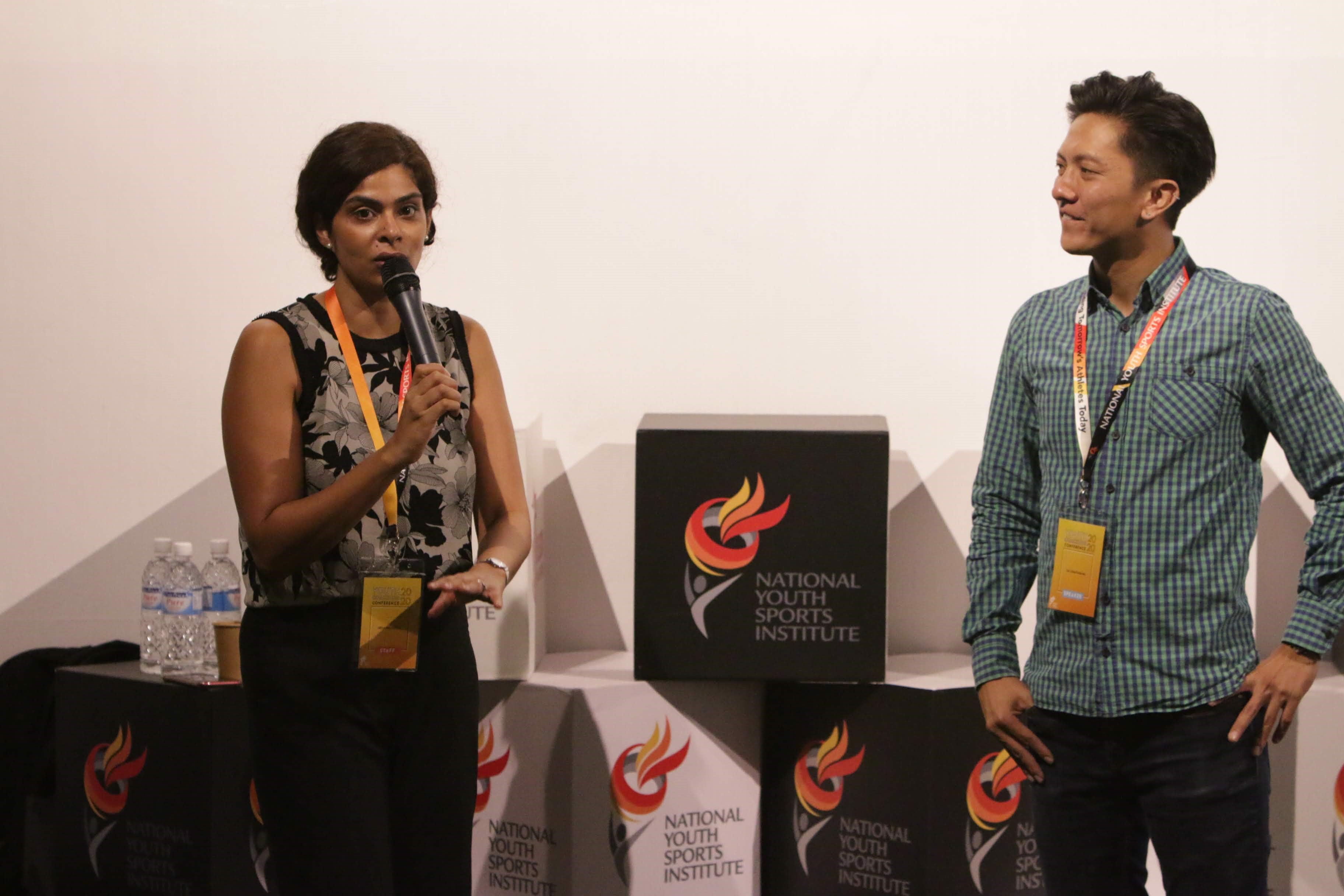
Dr Neha Malhotra (NYSI, Sport Psychologist and Research Coordinator) and Dr Jonathan Ng (right) were the keynote speakers at the 4th NYSI Youth Coaching Conference.
National Youth Sports Institute, 5 Stadium Lane, 19-20 Mar 2020 – “When coaches provide verbal instructions to teach motor skills, they should consider the potential repercussions of this in the long run, especially for certain individuals who have a higher tendency to consciously monitor and control their movements – high reinvesters,” said Dr Neha Malhotra.
Dr Malhotra was the first of two keynote speakers at the 4th Youth Coaching Conference (YCC) organised by the National Youth Sports Institute (NYSI).
The theme of the conference was, “Level up your coaching with advances in skill acquisition”. The two-day conference was sold out with 100 people registered for each day.
Dr Neha Malhotra, a sport psychologist and research coordinator at NYSI, spoke about how implicit motor learning can aid skill acquisition.
One of the challenges youth athletes face when acquiring new skills is coping with a lot of explicit, verbal instructions. When they try to execute a skill, they might process the verbal instructions their coaches have given them.
Researches have termed this tendency to consciously process information about the mechanics of movements as ‘Reinvestment’. Individuals differ in their propensity to reinvest (high vs. low reinvesters).
“While high and low reinvesters might have the same learning curve, low reinvesters have generally been shown to perform significantly better than high reinvesters under pressure,” Dr Malhotra said.
She said that ‘less is more’ when it comes to providing instructions to train skills.
Implicit motor learning, where the athlete learns a skill with a minimum conscious awareness of the mechanics of the movement, has long-term advantages,” Dr Malhotra said.
“If I learn a skill implicitly, the idea is that I don’t have to process the information about the step-by step-mechanics of how I am doing it. So I can have more attention to dedicate to a secondary task,” said Dr Malhotra.
“Skills that are learnt implicitly are more robust and resilient under conditions such as fatigue and psychological pressure,” she added.
In place of too much verbal instruction, Dr Malhotra suggested errorless learning and analogy learning as two ways to help athletes learn new skills.
In errorless learning, the environment is constrained so that the athlete makes fewer errors. For example, a rugby kicker might first attempt to put the ball between the posts from a distance of just a couple of meters. He then progressively moves further away and then might kick from certain angles.
With analogy learning, a coach can give the athlete biomechanical metaphors to convey how to carry out the movement without spelling out the rules. For example, a golf coach can tell an athlete to think of swinging her arms like a pendulum when putting.
For the benefit of their longer term development, Dr Malhotra left the youth coaches with a challenge to “simplify your instructions and cues”, so that their athletes become “more independent of information given to them”.
The second keynote speaker at the conference was Dr Jonathan Leo Ng. His work at the Ministry of Education focuses on impacting curriculum, pedagogy, and assessment in the area of physical education.
Dr Jonathan Ng suggested that being able to combine movements effectively has implications on long-term physical activity and athlete potential.
“What makes the difference in performance? Adaptability that comes from increased movement competence – the capacity to adapt and combine various movement attributes to find solutions based on given constraints. Importantly, movement competence resides on a spectrum and individuals with better movement competence have a greater propensity to be adaptable in finding movement solutions for a given task,” said Dr Ng.
“For example, when a child is exploring how to climb over a railing, a lot of skills that emerge from that movement experience are transferrable to other similar movement experiences such as navigating over little obstacles during a gymnastics lesson,” said Dr Ng.
“This build-up of movement experiences allows us to be more adaptable because we are now exposed to a range of possibilities in which movements can occur. But importantly, we now know how our body can be configured to move when faced with similar movement problems or tasks,” he added.
Dr Ng emphasised that coaches should focus training on building movement experiences so it will lead to an increase in adaptability and prompt critical thinking. This can be achieved through inter and intra movement or sporting experiences.
For example, in football, players can be placed in different playing positions to allow different configurations of movements to emerge due to the change in playing requirements. A player who usually plays on the right flank and repositioned on the left flank may be inclined to find creative solutions to overcome the change in constraints.
Taking the ecological dynamics perspective, Dr Ng said, “The way the athletes perceive the environment determines their movement responses and the way they behave. That’s why it is important to make practice representative of the performance environment and downplay repetitive drilling of isolated skills. Especially for children, movement competence is developed through a range of movement experiences that is not limited to only traditional sports but also through unstructured play in nature, green spaces and urban playscapes.”
The afternoon workshops saw coaches from different sports come together for a workshop to apply the implicit motor learning principles in their own training sessions.
In the feedback survey, conference participants wrote that the “thought-triggering research” the speakers presented provided a “good reminder to rethink what needs to be prioritised in training”.
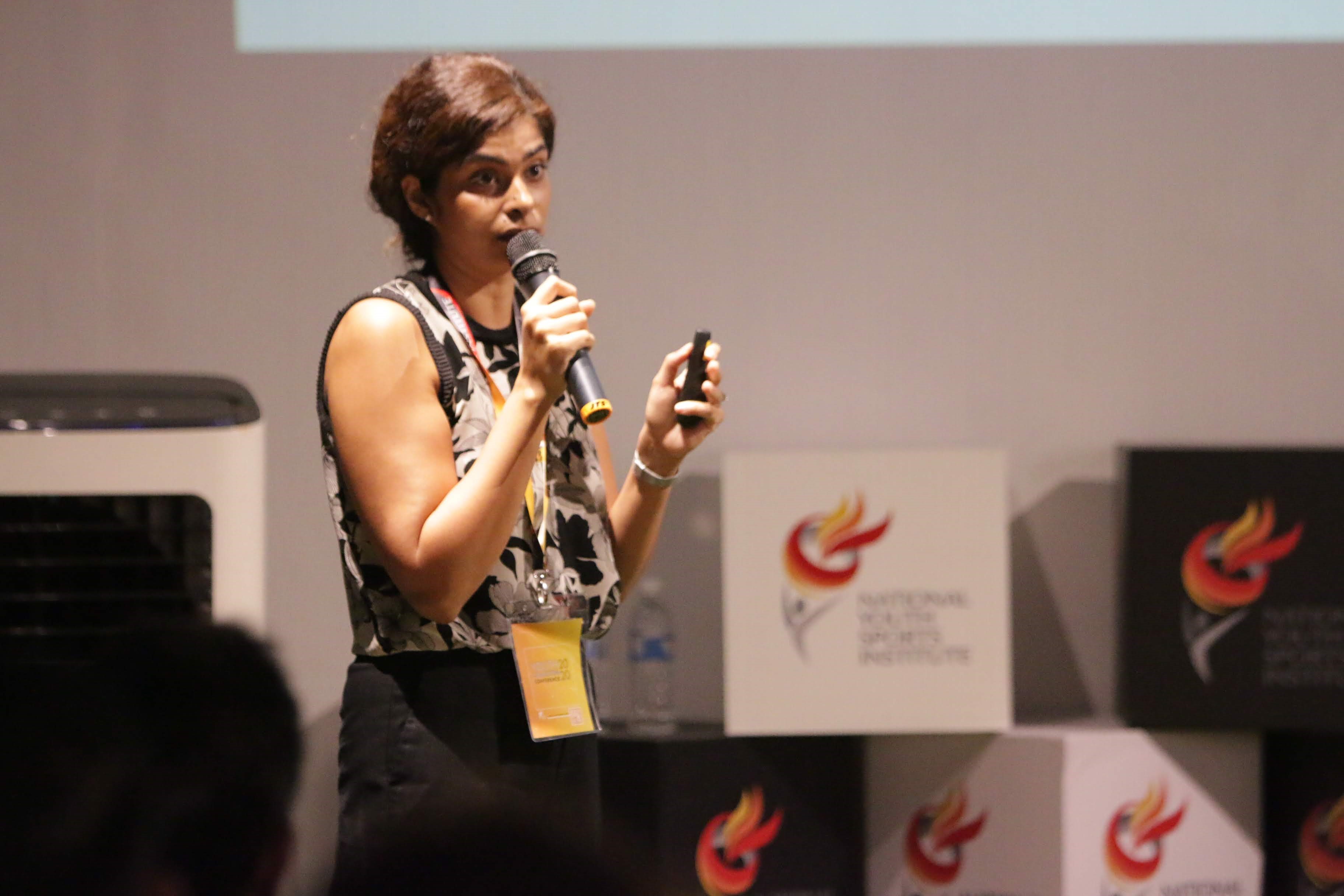
Dr Neha Malhotra speaking about implicit motor learning and how it can help athletes acquire skills and perform better under pressure.
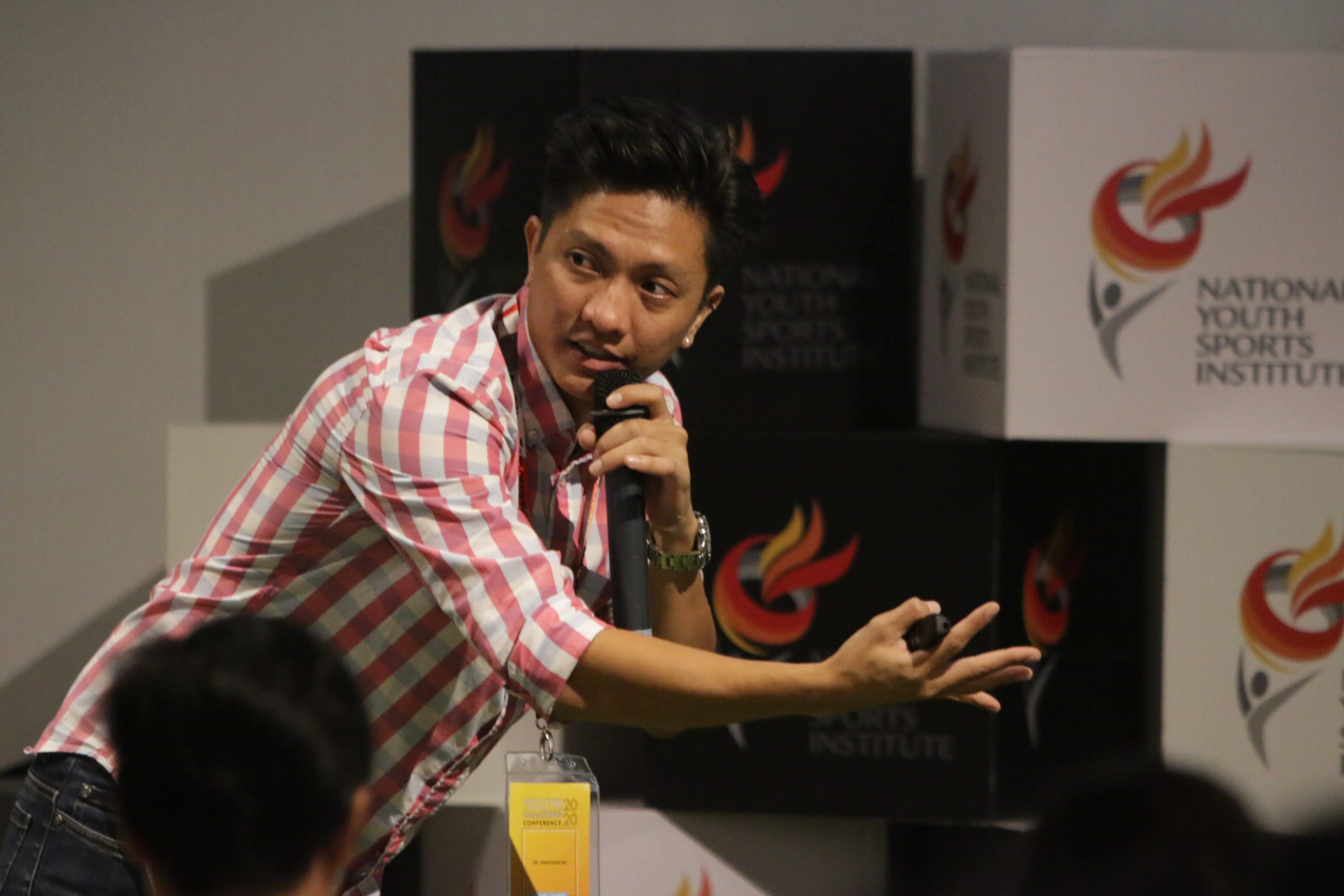
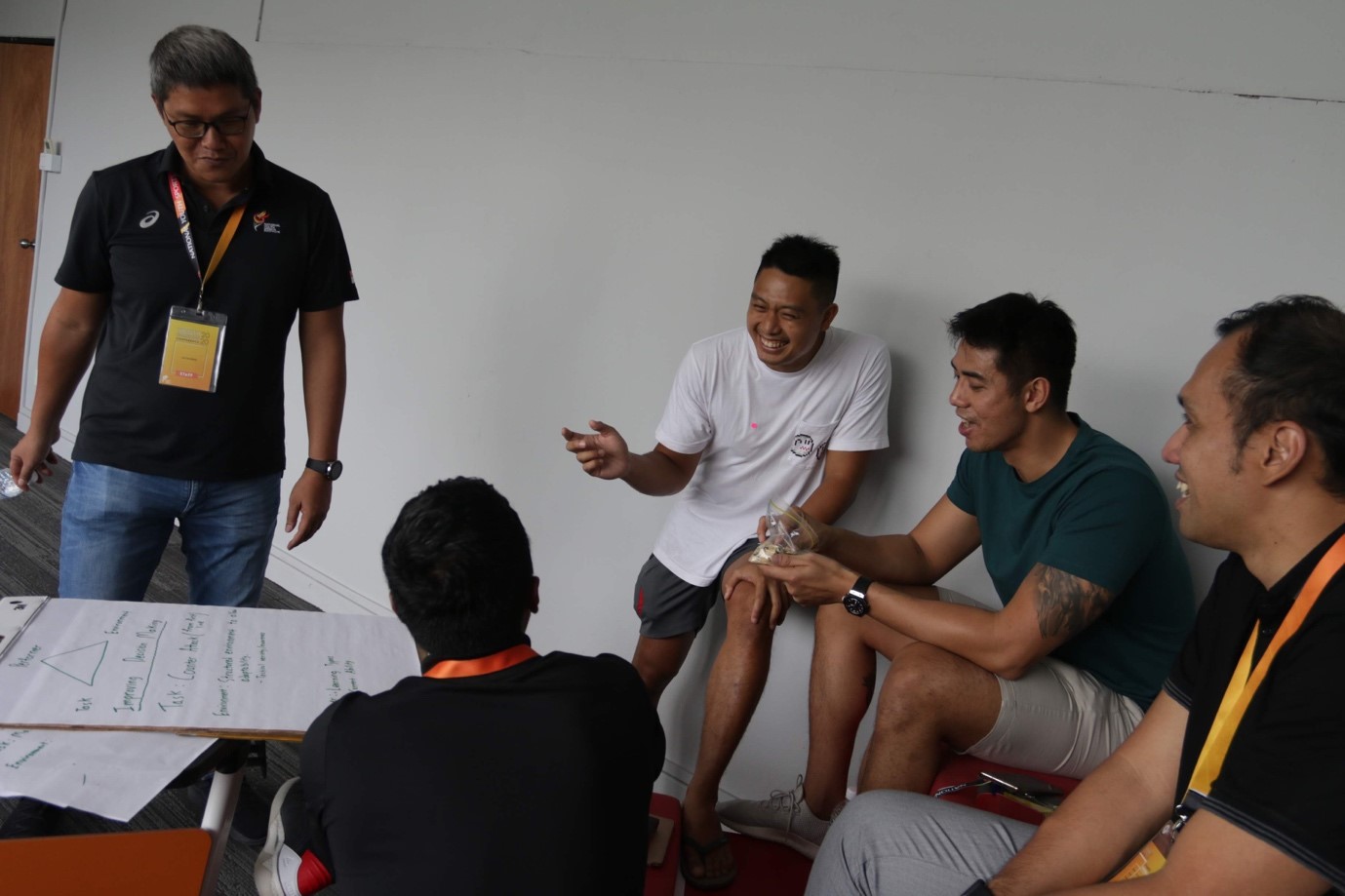
Lee Sai Meng, NYSI Water Polo Head Coach, leads a breakout session of coaches to discuss how they can apply implicit motor learning in their training sessions.
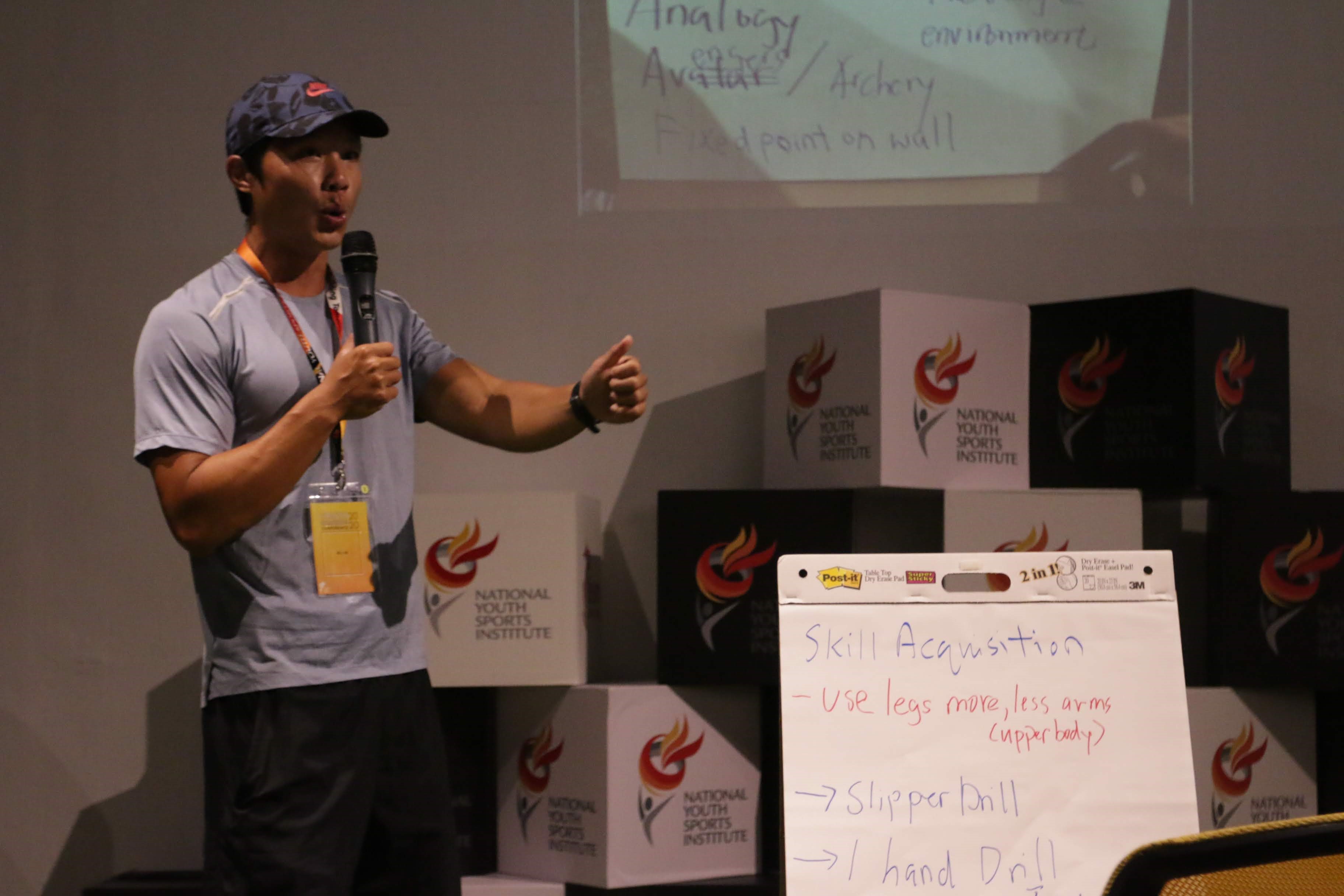
Bill Lee, a canoe coach, sharing how implicit motor learning can be applied in his training sessions.